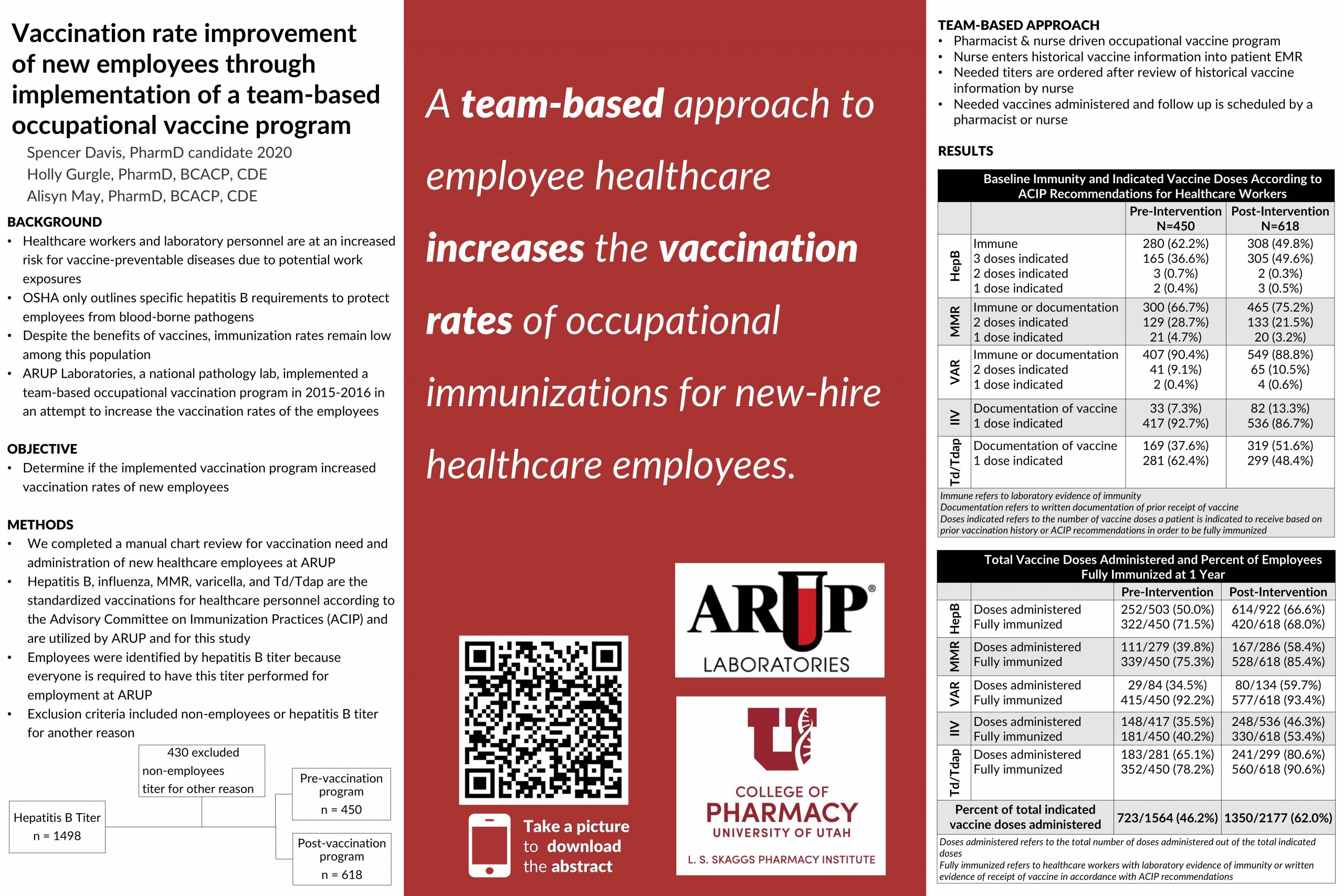Davis Spencer
Vaccination rate improvement of new employees through implementation of a team-based occupational vaccine program
April 21, 2020 in College of Pharmacy, Virtual Poster Session Spring 2020

Purpose:
Healthcare workers (HCW), including laboratory personnel, are at an increased risk for certain vaccine-preventable diseases due to potential occupational exposures. Despite the increased occupational risks, immunization rates published by the Center for Disease Control (CDC) for HCW remain suboptimal. ARUP Laboratories, a national pathology and reference lab, implemented a team-based intervention in 2016 aimed at improving new employee immunization rates. The purpose of this research was to assess new employee immunization rates in the study periods pre and post-implementation of a team-based occupational vaccine program.
Methods:
Researchers conducted a historical cohort study and reviewed electronic medical records (EMR) of employees at ARUP Laboratories. Employees were included based on a hepatitis B titer drawn during the pre-intervention (July 1, 2014 to June 30, 2015) or post-intervention (July 1, 2017 to June 30, 2018) study periods. Patients were excluded if they were not employed by ARUP or if a hepatitis B titer was drawn for any reason other than new employee screening. Researchers reviewed the EMR to identify which vaccinations were indicated and administered based on vaccination titer results and vaccination history, utilizing CDC recommendations for HCW as the standard. Researchers assessed vaccine doses indicated versus doses administered for hepatitis B, measles, mumps, rubella, varicella, tetanus, and influenza during the pre and post-intervention study periods. Descriptive statistics were utilized to identify trends in indicated and administered vaccines.
Results:
The pre and post-intervention cohorts included 450 and 618 new employees, respectively. Similar percentages of new employees were indicated to receive vaccines in the pre and post-intervention cohorts with a total of 1564 (average 3.5 per employee) and 2177 (average 3.5 per employee) doses indicated in the pre and post-intervention cohorts. Of those indicated doses, 723 (46.2%) and 1350 (62.0%) were actually administered in the pre and post-intervention cohorts. The percent of administered vaccine doses in the pre versus post-intervention cohorts for each individual vaccine were: hepatitis B (50.0% vs 66.6%), MMR (39.8% vs 58.4%), varicella (34.5% vs 59.7%), influenza (35.5% vs 46.3%), and tetanus (65.1% vs 80.6%).
Conclusion:
A trend toward increased vaccination rates was observed following the implementation of a team-based occupational vaccination program at ARUP Laboratories. Overall percent administration of indicated vaccinations, as well as completion of vaccination series, improved. An opportunity exists to further increase HCW vaccination rates.
